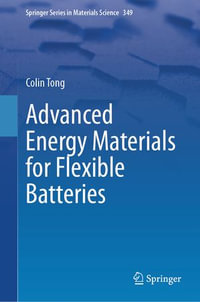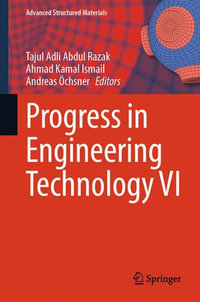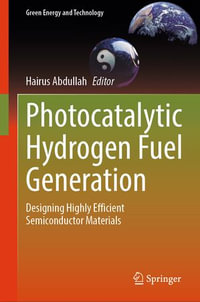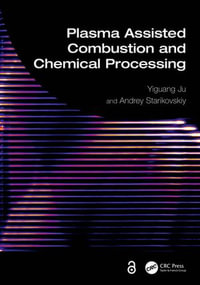
eBOOK
Numerical Modelling of Bulk Superconductor Magnetisation
By: Dr Mark Ainslie, Hiroyuki Fujishiro
eBook | 18 November 2019
At a Glance
150 Pages
Digital original
eBook
RRP $277.99
$222.99
20%OFF
or 4 interest-free payments of $55.75 with
orInstant Digital Delivery to your Booktopia Reader App
Read on
This book provides readers with numerical analysis techniques to model the magnetisation of bulk superconductors based on the finite element method. Applications of magnetised bulk superconductors are wide ranging in engineering due to their greatly enhanced magnetic field compared to conventional magnets. Their uses include rotating electric machines, magnetic resonance imaging (MRI), nuclear magnetic resonance (NMR) systems and magnetic separation. Numerical modelling is a particularly important and cost-effective method to guide both superconducting material processing and practical device design. It has been used successfully to interpret experimental results and the physical behaviour and properties of bulk superconductors during their various magnetisation processes, to predict and propose new magnetisation techniques and to design and predict the performance of bulk superconductor-based devices.
The necessary fundamentals of bulk superconducting materials, how to model these and their various magnetisation processes are presented along with an in-depth summary of the current state-of-the-art in the field, and example models, implemented in the software package COMSOL Multiphysics®, are provided so that readers may carry out modelling of their own.
Read on
TABLE OF CONTENTS
CHAPTER 1: Foreword/introduction
CHAPTER 2: Fundamentals of bulk superconducting materials
2.1 Bulk superconductors
2.2 Magnetic
properties of bulk superconductors
2.2.1 Superconducting
material classifications
2.2.1.1 Low- and high-temperature
superconducting materials
2.2.1.2 Type I and II
superconductivity
2.2.1.3 Irreversibility
field
2.2.2 Flux pinning
and field trapping
2.2.3 Flux creep
2.3 Fabrication
processes
2.3.1 Bulk (RE)BCO
superconductors
2.3.2 Bulk MgB2
superconductors
2.3.3 Bulk
iron-pnictide superconductors
2.4 Magnetisation
of bulk superconductors
2.4.1 Pulsed field
magnetisation
2.5 Bulk
superconductor applications
2.5.1 Flux pinning
applications
2.5.1.1 Levitation
2.5.1.2 Magnetic
bearings, flywheel energy storage and superconducting mixers
2.5.2 Flux trapping
applications
2.5.2.1 Magnetic
separation
2.5.2.2 Rotating
machines
2.5.2.3 Portable NMR/MRI
systems
2.5.2.4 Lorentz force
velocimetry
2.5.2.5 Other
applications
2.5.3 Flux shielding
applications
2.5.4 Magnetic lens
2.5.5 Conductor
alternative
CHAPTER 3: Numerical modelling of bulk superconducting materials
3.1 Modelling of bulk
superconductors
3.1.1 Analytical
techniques
3.1.2 Numerical
techniques
3.2 Finite
element method
3.2.1 Modelling bulk
superconductors using FEM
3.2.1.1 Geometry,
including magnetisation fixture
3.2.1.2 Electromagnetic
formulation
3.2.1.2.1 H-formulation
3.2.1.3 Electrical
properties
3.2.1.3.1 Critical current
density, Jc(B, T)
3.2.1.3.2 E-J
power law
3.2.1.3.3 Electromagnetic
boundary conditions
3.2.1.4 Thermal
properties & electromagnetic-thermal coupling
CHAPTER 4: Modelling magnetisation of bulk superconductors
4.1 Magnetisation of bulk
superconductors
4.1.1 Zero-field-cooled
(ZFC) & field-cooled (FC) magnetisation
4.1.1.1 Simulation of
ZFC magnetisation
4.1.1.2 Simulation of FC
magnetisation
4.1.1.3 Case study #1:
MgB2 bulks
4.1.1.4 Case study #2:
Iron-pnictide bulks
4.1.2 Pulsed field
magnetisation
4.1.2.1 Basic model
4.1.2.2 Influence of PFM
parameters on trapped fields
4.1.2.3 Case study #3:
PFM of bulk HTS materials using a split coil with an iron yoke
CHAPTER 5: Demagnetisation & novel, hybrid bulk superconductor structures
5.1 Demagnetisation
effects & AC losses
5.2 Novel &
hybrid bulk superconductor structures
5.2.1 Composite
structures with improved thermal conductivity
5.2.2 Hybrid
ferromagnet-superconductor structures
5.2.3 Hollow bulk
cylinders & tubes for shielding
5.2.4 Hybrid trapped
field magnet lens
APPENDIX A: Thermal properties of bulk superconductors
A.1 Introduction
A.2 Experimental
procedure
A.2.1 Thermal
conductivity
A.2.2 Thermal
dilatation
A.3 Typical
results
A.3.1 Bulk (RE)BCO
A.3.1.1 Thermal
conductivity
A.3.1.2 Thermal
conductivity in magnetic fields
A.3.1.3 Thermal
dilatation
A.3.2 Bulk MgB2
A.3.2.1 Thermal
conductivity
A.3.2.2 Thermal
dilatation
ISBN: 9780750313322
ISBN-10: 0750313323
Series: IOP ebooks
Published: 18th November 2019
Format: ePUB
Language: English
Number of Pages: 150
Audience: Professional and Scholarly
Publisher: Institute of Physics Publishing
Edition Type: Digital original
You Can Find This eBook In
This product is categorised by
- Non-FictionSciencePhysicsMaterials & States of MatterCondensed Matter Physics including Liquid State & Solid State Physics
- Non-FictionSciencePhysicsElectricity
- Non-FictionMathematicsApplied MathematicsMathematical Modelling
- Non-FictionComputing & I.T.Graphical & Digital Media Applications3D Graphics & Modelling























